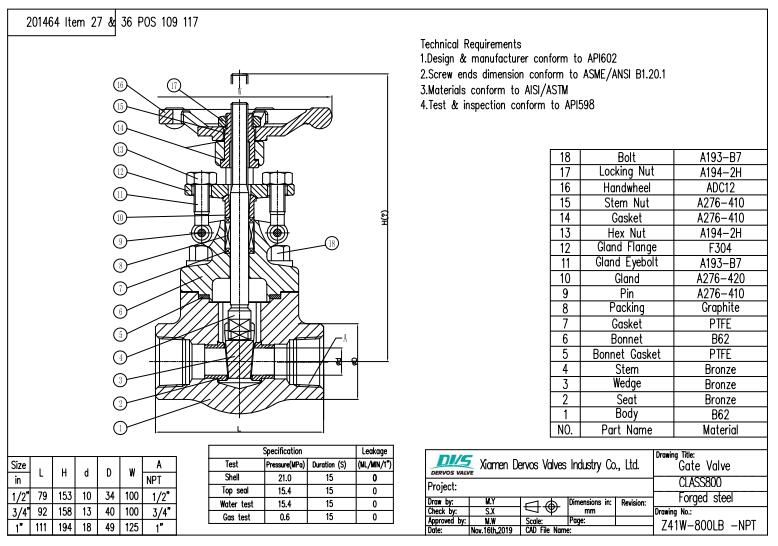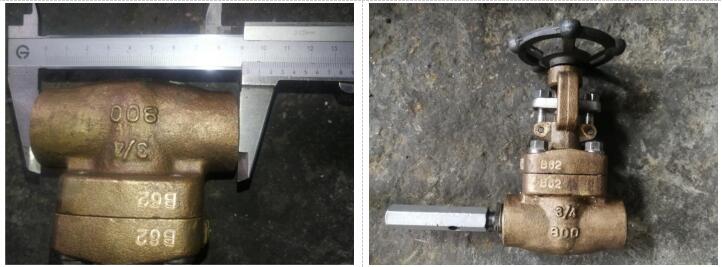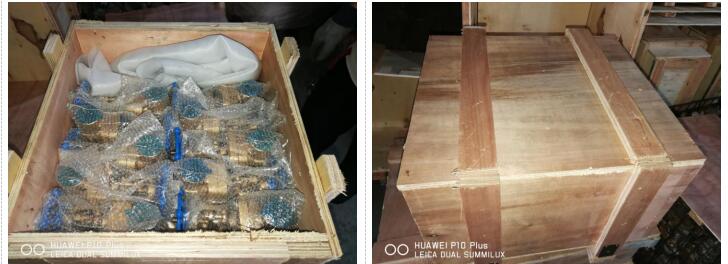Differing 1/4 inch to 3 inch, this gate valve is made of B62 bronze according to API602. No matter what pressure rating, thread design or size you require, Dervos has a large selection of valves to meet your needs.
Payment:
30% when order confirmed, 70% before shipmentProduct Origin:
ChinaColor:
CustomizationShipping Port:
Shanghai, ChinaLead Time:
30~60 days Ex Works after order confirmationMaterial:
BronzeMethod of Operation:
HandwheelQuick Detail
|
Type |
Gate Valve |
|
Size |
1 Inch |
|
Design Pressure |
ANSI 800 |
|
Construction |
BB; Solid Wedge; Renewable Seat; |
|
Connection Type |
FNPT |
|
Operation Type |
Hand wheel |
|
Body Material |
ASTM B62 |
|
Wedge Material |
Bronze |
|
Stem Material |
Bronze |
|
Seat Material |
Bronze |
|
Design Code |
API602 |
|
End Connection |
ASME B1.20.1 |
|
Test & Inspection |
API 598 |
|
Medium |
Water, Oil and Gas |
|
Origin |
China |
Features
--Threaded Bonnet
--Threaded Ends
--B62
--Renewable solid wedges
--Integral seats
--High–Tensile bronze alloy stems
Technical Drawing

Dimension Check

Witnessing Tests

Packing

With Dervos customer service, you will not have any concern before, during and after buying valves.
Pre-sales
We will reply on time and also provide technical support upon your request.
Order
We will check the production details with factory and customers. Sales confirmation will also be sent. During production, we will also send weekly report to let you know the order status. Before shipment, delivery note will be sent to let you know the situation.
18 Month warranty
Dervos is always responsible for their products. We will provide 18 months warranty to let our customers without concern.
Complaint handling
When receiving the complaints, we will reply within 24 hours and give the solution as soon as possible.
If you are interested in our products and want to know more details,please leave a message here,we will reply you as soon as we can.